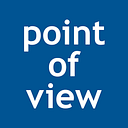Solving the Inclusion Equation - Chantalle Couba
Improving DEI efforts is at the forefront of many organizations initiatives. Many companies know what they want to do, but struggle with how to actually implement it in a sensitive yet effective way.
I recently had the opportunity to speak with Amena Ross, Managing Director of Advocacy at SIFMA on The SIFMA Podcast on addressing diversity and inclusion, and some hesitations that may get in the way.
Read some of my thoughts below.
“How you address diversity and inclusion really is, if you’re a gardener, from the ground up. It’s about what the soil is in your organization. What type of culture do we build that’s one that grows inclusion?
“People want to do something. And people were are just struggling with, ‘Well, where do I start? This is such an enormous problem.’ Right?
“This creates a great opportunity where everybody can get on board. There is a space and a place and a platform for everybody who wants to be an advocate. I want to emphasize what I try to preach in my own life and at any business or organization. The message I want to spread is that you don’t have to be of color. You don’t have to be Black American. You don’t have to be in Afghanistan to be an advocate for the next person.
“Just you standing up , speaking out and representing your lack of tolerance for inequality and, ultimately, abuse of other human beings is part of being an advocate. And so I think that regardless of whether we do that at any business or organization, ultimately, that’s what we’re all wanting to do.
“I think what becomes difficult in my perspective as a practitioner, as an executive, as a professional who has both formally worked on D&I practices, as well as just being an advocate, supporter and leader of them from within my day job, is, quite frankly, our fear of offending others at the expense of accelerating those who are, again, historically underrepresented in our field. I really believe it’s our fear that holds us back.
“Ultimately, I think it’s quite simple to solve for the inclusion equation. We can simply hire and develop more people into the roles that we want if they’re coming from outside of our company. And then within our own company, your best talent source are the people that are inside of your own company whom very likely are overlooked for a promotion, for development, for acceleration opportunities.
“So I think if you put those two together with the third piece that is creating and sustaining an inclusive culture, you have the equation solved for.”
Chantalle is a motivated executive-level advisor with substantial in-house and advisory financial services experience within various industries within private equity investing. As a creative solution-oriented person, Chantalle is an expert of framing ambitious challenges into opportunities, creating organic growth for organizations. Also a leader in diversifying the workforce, Chantalle serves on the board for the nonprofit organization INROADS, and founded Namaste Consulting. All three organizations efforts go toward breaking barriers and giving diverse talent opportunities.
